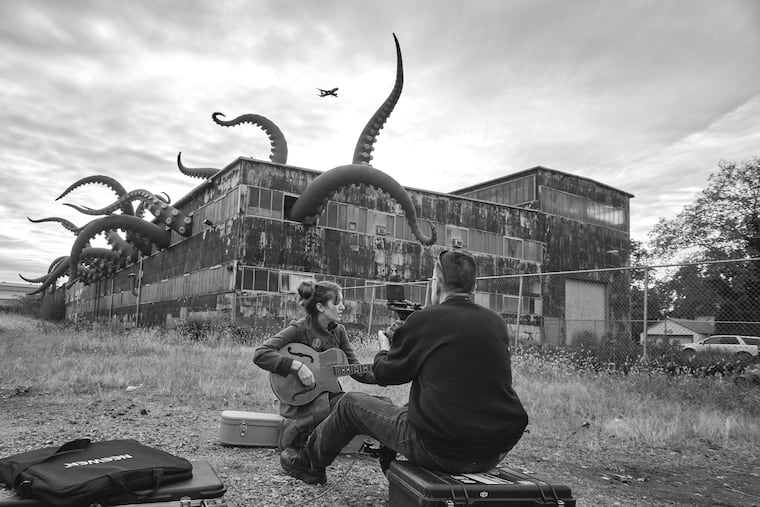A photographer battles Parkinson’s disease with beautiful images of the public art that surrounds us
A new book about public art in Philadelphia is not just about the art on display, but also about the many ways in which we experience it.

The following is excerpted from In Plain Sight: Public Art in Philadelphia, a new book by former Inquirer photographer Ed Hille, whose work explores the intersection of local art and the community.
What is public art and why is it important? To me, the answer can be found in a little four-word phrase used as a slogan by Philadelphia’s Association for Public Art: “Art for everyone, anytime.”
Philadelphia is thought to have the oldest and largest collection of public art in the country. Some of the works, such as Claes Oldenburg’s Clothespin and Robert Indiana’s Love sculpture, are in prominent locations and have become tourist destinations, much like the Liberty Bell or the Rocky statue have. Other works of art define particular neighborhoods, parks and personalities. Most are permanent installations, though some are meant to be temporary.
As a staff photographer at The Philadelphia Inquirer for 33 years, I was privileged to have a front-row seat to life in the city. And as I traveled about, I developed a strong appreciation for public art. It is everywhere! Did you know that there are over 3,000 murals spread throughout Philly? It’s an extraordinary number, but the extraordinary has become an ordinary part of life here.
These treasured works of art are so neatly woven into the fabric of the city, and have become so commonplace, that life simply moves around them. The art forms a backdrop to everyday activities. Some of these works are beautiful, some are powerful, and some serve as monuments to great figures, while still others were created to stir our imagination and curiosity.
I began photographing Philadelphia’s public art, and the relationship people have with it, as a way to fight back against Parkinson’s disease. I was diagnosed in the fall of 2016 and retired from the Inquirer about a year later. By that time I had spent my whole career working in photography, and to this day, it continues to be my lifeline and escape mechanism. As the project progressed, I adopted a Muhammad Ali quote as my mantra: “Don’t count the days, make the days count.”
Each photograph in my new book represents a moment in time when I was able to fulfill my purpose of helping people appreciate and see new angles of the city and the art that surrounds them. So the book is not just about the art on display, but also about the many ways in which we experience the art. And that’s a testament to Philadelphia, a city that has committed significant resources to creating and preserving public art.
It’s my honor to donate the proceeds of In Plain Sight to the cause of Parkinson’s research. I hope that advances in understanding the disease will empower others to keep doing the work that matters to them.